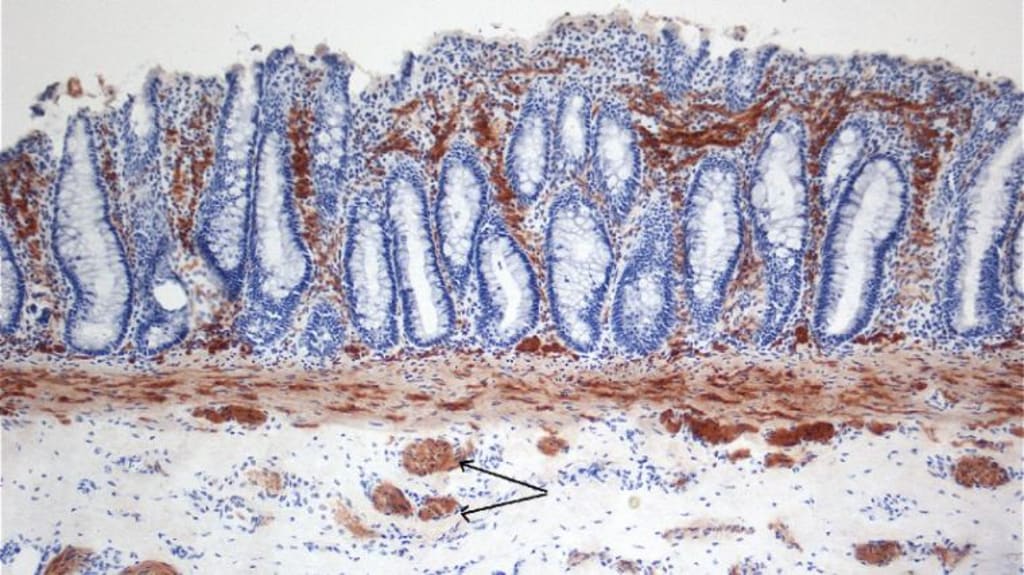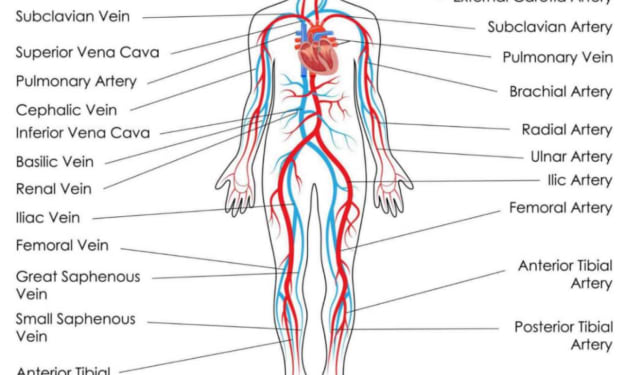Content warning
This story may contain sensitive material or discuss topics that some readers may find distressing. Reader discretion is advised. The views and opinions expressed in this story are those of the author and do not necessarily reflect the official policy or position of Vocal.
HIRSCHSPRUNGS DISEASE
CAUSES, SYMPTOMS AND TREATMENT OPTIONS

Overview
Hirschsprung’s disease is a congenital condition in which nerve cells are missing from parts of the large intestine. This absence hinders the normal movement of stool, leading to bowel obstruction and severe constipation in infants and children. Surgical removal of the affected portion of the intestine is the primary treatment for this rare disorder.
This disorder arises from improper formation of the enteric nerves (intestinal nerves) during the developmental stage preceding birth, known as embryonic development.
Though less severe instances may be found later in infancy, this illness is often detected in the first two months of life. Enteric neurons contract the muscles responsible for moving faeces through the gut. In patients with Hirschsprung disease, the material cannot pass through the gut because certain sections lack these nerves, which results in severe constipation or total blockage of the colon.
Forms of Hirschsprung’s disease
There are two primary forms of Hirschsprung disease:
Short-segment: The most prevalent kind. The last section of the large intestine is not where nerve cells develop.
Long-segment: It happens when the big intestine is devoid of nerve cells.
Causes of Hirschsprung’s disease
Early in pregnancy, it starts to manifest in the infant. The cause of Hirschsprung’s illness is unknown. It can run in families and occasionally be linked to a genetic mutation. The incomplete formation of nerve cells in the colon leads to Hirschsprung’s disease. Food passes through the bowels thanks to muscular contractions controlled by nerves in the colon. Stool remains in the large intestine in the absence of contractions.
Symptoms of Hirschsprung’s disease
The degree of Hirschsprung’s illness affects the signs and symptoms that an individual experiences. Sometimes, symptoms and indicators only appear much later in life, although they usually do soon after delivery. Hirschsprung disease can cause enterocolitis in up to 40% of children. This illness inflames both the small and large intestines. Inflammation in children might be minimal. Others suffer from severe, sometimes fatal symptoms. Hirschsprung disease symptoms, including fever and explosive diarrhoea, are seen in children with severe enterocolitis.
A newborn’s inability to have a bowel movement within 48 hours of delivery is usually the most noticeable indicator.
Additional indications and manifestations in neonates might be:
Belly swell
Throwing up, especially when something green or brown comes out of your mouth
Gas or constipation might cause a newborn to become fussy.
The diarrheal
delayed meconium transit, a newborn’s first bowel movement
Signs and symptoms in older kids may consist of:
Belly swelling
Persistent diarrhoea
Gas
Inability to thrive
Exhaustion
Treatment Options for Hirschsprung’s Disease
The disorder known as Hirschsprung’s illness is quite challenging. However, if discovered early, it can help your child have a reasonably normal life.
Typically, physicians will do one of two kinds of surgeries:
Pull-through surgery: This method excises the large intestine section lacking nerve cells. After that, the anus is directly attached to the remainder of the intestine.
Ostomy surgery: This procedure makes an incision in the body to route the intestines. The ostomy bag, used to retain intestinal waste, is subsequently attached to the exterior of the incision. Until the youngster is prepared for the pull-through treatment, ostomy surgery is typically used as a stopgap.
Following surgery, some kids may experience diarrhoea, constipation, or incontinence (loss of control over urine or bowel movements).
Enterocolitis might strike a small number. Fever, vomiting, enlarged abdomen, and rectal bleeding are among the symptoms. In such an event, the child must be immediately taken to the hospital. Nonetheless, these ailments ought to improve with appropriate care, including a healthy diet and lots of water, and most kids may resume regular bowel movements within a year of starting therapy. Some kids will occasionally experience gastrointestinal problems well into adulthood. As a congenital condition, Hirschsprung’s disease should be watched carefully throughout life.
When to Consult a Doctor
You can also get in touch with the expert Gastroenterology doctors at any Healthcare based in your city to get immediate attention and medical support during injuries, health disorders or any other health concern.
If this piece of writing has brightened your day or provided you with valuable insights, why not share a virtual high-five by leaving a ❤️? If you're feeling exceptionally generous, a tip is like a standing ovation in the digital world. Your support fuels the creative engine, ensuring more engaging content comes your way. And for a front-row seat to future musings, click that subscribe button – it's like being a VIP in the world of words. Thank you for being an integral part of this writer's journey!
If you find this piece of writing is interesting or valuable to you. Please consider leaving a ❤️ as a virtual high-five or even a tip and also click on subscribe to support me. Your support means a lot to me as a writer. 🚀✨
About the Creator
Abdullahi Alabi
I am Abdullahi by name. An expert writer with numerous years of experience. I have established myself as a prominent figure in the world of writing.
Enjoyed the story? Support the Creator.
Subscribe for free to receive all their stories in your feed. You could also pledge your support or give them a one-off tip, letting them know you appreciate their work.





Comments (2)
Hello, AI is permitted on Vocal. It is a Vocal policy that content created with AI is identified as such at the start of the story/article. Your article/story has many hallmarks of AI-assisted/generated content. You can find the details of the Vocal policy here: https://vocal.media/resources/an-update-from-vocal-on-ai-generated-content, Please amend your piece to be in compliance.
Did You pull this article from several sources such as the National Institutes of Health, Mayo Clinic, Medline Plus, Cleveland Clinic, etc.?